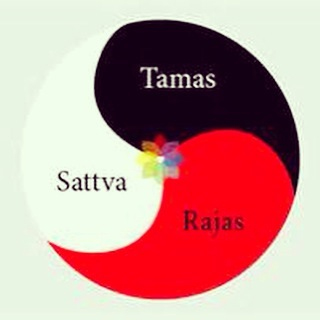Perspective
The purpose of stress
Abstract
In recent times, a significant portion of medical interventions are preoccupied with stress reduction as many pathological processes find their expression and aggravation in stressful situations. However, a closer look into life reveals that stress has a constructive role in evolution and existence. This article explores the inner ways to go through stress from a spiritual perspective. This provides a psychological tool to go beyond stress so that life becomes more meaningful and joyful.
All institutions and systems of the human brain have an innate factor of stress built in in them. It is this stress which extracts work and provides a self-driving force. A system without stress would eventually collapse into inertia and die out.
Thus stress is not always negative and it is indeed positive in its origins, an expression of rajo guṇa. It turns negative only when there is no balancing sattva, the right thought which guides an aimless force. At such times the tamo guṇa or ignorance and inertia uses the force for selfish ends which ultimately destabilises the system.
An even balance between tamas, rajas and sattva is not an accidental phenomenon and is always the spiritual effect of the Divine Force governing all systems of Nature. A soul which attains the status of Nistraiguṇya, through a constant spiritual sādhanā, comes at once into contact with this Divine Existence. To be purified of the triguṇas and to live with one‘s psychic being is the ultimate purpose of the existence of all inbuilt stress in a system.
These are the four possible common reactions of a person in a stressed-up system. But the spiritual solution lies beyond all these four:
1. One may revolt for one‘s rights and become aggressive but it becomes too masculine in course of time.
2. One may accept slavery and get ready to be deprived of all rights but it becomes too feminine in course of time.
3. One may tactically avoid duties and persecute the system. This is perverse masculinity.
4. One may tactically overdo duties in order to pacify the wild animosities. This is perverse feminity.
The spiritual solution lies in accepting these four different forms of stress as they come and experience the friction as it builds or re-defines spiritual relations with God. A state of samatā to all external happenings thus becomes a good foundation for unceasing sādhanā. Here is an anonymous quotation about the relevance ‘of being happy’, which is another chief attribute of Śānticatuṣṭaya (1) (Samatā śāntiḥ sukhaṃ hāsyaṃ iti Śānticatuṣṭayaṃ):
“Being happy does not mean that everything is perfect. It means that you have decided to look beyond the imperfections.”
For one who has come into touch with the Grace of God at least once in life and for one who likes to live in it all through life, here is an aphorism by Sri Aurobindo from the Bhakti section of his Thoughts and Aphorisms:
“Discipleship to God the Teacher, sonship to God the Father, tenderness of God the Mother, clasp of the hand of the divine Friend, laughter and sport with our Comrade and boy Playfellow, blissful servitude to God the Master, rapturous love of our divine Paramour, these are the seven beatitudes of life in the human body. Canst thou unite all these in a single supreme & rainbow-hued relation? Then hast thou no need of any heaven and thou exceedest the emancipation of the Adwaitin (2).”
References
1. Sri Aurobindo. Record of Yoga, Part 1, 1st ed. Pondicherry: Sri Aurobindo Ashram Trust; 2001, p. 3.
2. Sri Aurobindo. Birth Centenary Library, Volume 17. Pondicherry: Sri Aurobindo Ashram Trust; 1971, p. 137.
3. Sri Aurobindo. Birth Centenary Library, Volume 13. Pondicherry: Sri Aurobindo Ashram Trust; 1970, p. 65.
Definitions
Advaitin: one who sees God within and likes to live in Him.
Bhakti: devotion
Nistraiguṇya: a state of consciousness which is not subjugated to the action of triguṇas.
Prakṛti, triguṇas, sattva, rajas, tamas:
Sri Aurobindo in his Essays on the Gita explains the behaviour of Nature (Prakṛti) and its three modes of operation in the following terms:
“…Prakriti is constituted of three Gunas or essential modes of energy; Sattwa, the seed of intelligence, conserves the workings of energy; Rajas, the seed of force and action, creates the workings of energy; Tamas, the seed of inertia and non-intelligence, the denial of Sattwa and Rajas, dissolves what they create and conserve (3).”
Samatā śāntiḥ sukhaṃ hāsyaṃ iti Śānti-catuṣṭayaṃ: this is one of the seven kinds of accomplishments which a sādhaka of the Integral Yoga is expected to master before he stabilises all spiritual capacities in himself. Each of these seven accomplishments has four chief attributes in it and is called a Catuṣṭaya, i.e. the fourfold unit. The transliteration of Śānticatuṣṭaya is given as follows:
Samatā: equality
Śānti: peace
Sukhaṃ: sattvic light and ease
Hāsyaṃ: gladness and cheerfulness
Dr. Venkatesh Palla, a member of SAIIIHR, is a practising homoeopathic physician at Bhimavaram, Andhra Pradesh, India.
Share with us (Comments,contributions,opinions)
When reproducing this feature, please credit NAMAH,and give the byline. Please send us cuttings.



